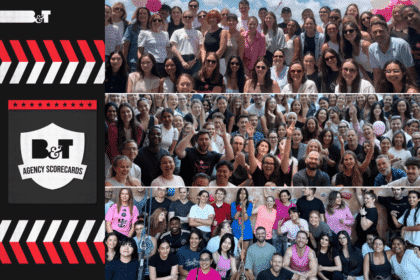Nikola Small, lead, DV+ publisher development, Magnite Australia, writes while marketers seem to have a handle on Gen Z, publishers are finding it harder to monetise this most perfidious of demos. Here are her top tips for cracking the zoomer code.
Much has been written about Gen Z, the first truly digital-native generation, who are effectively (and efficiently) moulding the marketing consumer journey into a non-linear infinity loop of exploration, community, and constant stimulation. In the process, they are turning the traditional, linear marketing funnel on its head.
They demand instant gratification through information and inspiration, yet carefully consider where to spend their share of wallet. They extensively research purchases, prioritise values and sustainability, and are more comfortable exchanging personal data for perceived value. They have a thirst for knowledge and have a high level of interest in global communities.
While marketers are adapting their strategies to accommodate this Gen Z-focused, somewhat lopsided, figure-eight marketing funnel, market indicators suggest publishers are still working on how to engage with younger audiences and find ways to better monetise them.
The headline is of course that publishers who offer valuable, engaging content; leverage data effectively; and embrace new technologies will remain vital players in the evolving media landscape. Here are six key areas that publishers should pay close attention to both support marketers marketing funnels and ensure strong growth for themselves.
- Implement a dynamic, multi-channel approach. Actively test and learn from higher-performing formats that Gen Z crave like short-form video, immersive audio, rich media, and mobile-first content. Formats like audio, for example, resonate particularly well with Gen Z consumers, who listen to over 15 hours of audio content weekly, 1.7 times more than the average Australian listener (Deloitte). Investigate emerging formats like shoppable content or in-app experiences that keep users engaged on-platform. By testing formats that align with Gen Z’s habits, publishers can drive more meaningful engagement and position themselves for long-term success.
- Integrate more dynamic, short-form, and visually driven content across TV and digital platforms to cater to Gen Z’s preference for concise, visually rich information that can be consumed on the go. Spotify’s much-revered Wrapped playlists are a great example of this. In addition to providing users with an outlet to reflect on their year in music, the feature is presented in an interactive, shareable format, combined with colourful visuals and clever insights, making it incredibly engaging.
- Abandon the use of broad demographic targets. It still happens. Stop bucketing 18–54-year-olds together, but also be mindful that assuming Gen Z is homogenous is simplistic. Use data to deliver thoughtful segmentation by focusing on specific persona-based segmentation and contextual alignment.
- Don’t overlook the value of personalisation – appealing to Gen Z’s individuality is key. The Seven Network is one publisher that has recognised the importance of personalised content to engage younger viewers and implemented an enhanced strategy to reach this audience. These efforts include experimenting with reducing ad loads in trials, which have shown a 20% increase in viewing time among younger demographics on the 7Plus platform. In addition, Seven is leveraging AI to predict and cater to viewer preferences to boost engagement and grow its audience.
- Ensure your strategy team includes people who are also your customers. The IAB Talent Census highlighted an industry trend towards juniorisation, so perhaps you already have Gen Z on your team. If not, stop guessing and start actively listening.
- Consider how to take advantage of the increasing popularity of direct-to-consumer (DTC) brands, particularly among Gen Z. This might mean partnering with DTC brands, creating your own DTC offerings, or emulating the authentic, community-driven approach of successful DTC companies.
By meeting GenZ where they are and embracing an agile, audience-centric approach, publishers and marketers alike will be well-positioned to turn these digital natives into fans and customers for the future.








